Unboxing the Nintendo Switch OLED - Is It Really An Upgrade?
In this episode, we unbox the New for 2021 Nintendo Switch OLED and compare it to a launch day Original Switch, and see if it is really an upgrade.
Since the launch of the original Nintendo Switch in 2017, there have been rumors of new hardware with 4K support, larger screens, and more. However, what we got, instead of the Switch Pro, is what you see here in the Switch OLED. More of a derivative than something truly innovative, the Switch OLED does include a larger, 7-inch OLED display enhanced speakers, and a new dock. Additionally, Nintendo also doubled the onboard storage from 32GB, which was ridiculously tiny, to begin with, to 64GB. Never fear, there's an external SD card slot for when you inevitably fill up the onboard storage and need to expand.
The dock features a crucial upgrade that many have been demanding since the original's launch, that being an integrated Ethernet port. For those with spotty or slow WiFi, you can't understate how important of an addition this is. It does come at a cost, as the inclusion of the Ethernet port also eliminated one of the onboard USB ports on the dock. As someone with decent WiFi, I am not sure I feel the need for this change, but I can understand its desire. Perhaps in the future, the solution would be to offer 2 docks, one with the Ethernet port and the other with the USB port, and go from there.
Getting the system set up and running took very little time at all. I will say scanning the QR Code to log into my account was very convenient compared to trying to type or enter my information for my Nintendo account on the Switch OLED itself, it saved quite a bit of time. The battery had about 85% charge on it from the box, so I was able to get everything set up in handheld mode. Normally I would have used TV Mode, but with having just moved and the game room is not set up yet, this was a lot easier for me.
From the word go, I will say that I was very impressed with the sharpness and quality of the new 7" OLED display. Colors looked vibrant and rich, a definite improvement over the original display in every way. I'll also say the audio was considerably louder with the new speakers, something I did not anticipate. And they weren't just loud, but very clear too.
One of the things I was most interested in was whether or not accessories for the Original Switch would work with the Switch OLED. I will say both the Skull&Co Clear Grip Case & Dock worked flawlessly, as I expected. I also tested out the Hyperkin RetroN64 dock, but that didn't work initially. I am still testing to see what the issue there is. I was also disappointed that my Fixture Gaming S1 did not work with the Switch OLE, but that was something I really didn't expect.
Overall, I think the Switch OLED is well put together, however, I don't know that it is a necessary upgrade for those who already have a Switch. If you play mostly in TV Mode and have decent WiFi I'd say there's no reason to update your system, and unless you just have to have the OLED display I think the Switch Lite is a better Handheld Option. Were going to do a lot more testing of accessories to check and see what does and what does not cross over from the original system.
#SwitchOLED #Unboxing #Nintendo #VideoGames #InitialThoughts
The footage used in this review are used under the Fair Use laws, referenced below:
https://www.law.cornell.edu/uscode/text/17/107
Notwithstanding the provisions of sections 106 and 106A, the fair use of a copyrighted work, including such use by reproduction in copies or phonorecords or by any other means specified by that section, for purposes such as criticism, comment, news reporting, teaching (including multiple copies for classroom use), scholarship, or research, is not an infringement of copyright. In determining whether the use made of a work in any particular case is a fair use the factors to be considered shall include—
(1) the purpose and character of the use, including whether such use is of a commercial nature or is for nonprofit educational purposes;
(2) the nature of the copyrighted work;
(3) the amount and substantiality of the portion used in relation to the copyrighted work as a whole; and
(4) the effect of the use upon the potential market for or value of the copyrighted work.
The fact that a work is unpublished shall not itself bar a finding of fair use if such finding is made upon consideration of all the above factors.
(Pub. L. 94–553, title I, § 101, Oct. 19, 1976, 90 Stat. 2546; Pub. L. 101–650, title VI, § 607, Dec. 1, 1990, 104 Stat. 5132; Pub. L. 102–492, Oct. 24, 1992, 106 Stat. 3145.)
-
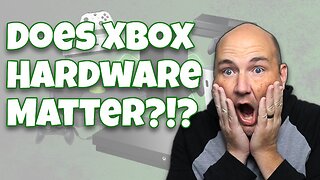 18:25
18:25
RoXolidProductions
3 months ago $0.01 earnedPeople Need to Stop Freaking Out About Whether Xbox Hardware is Going Away
2013 -
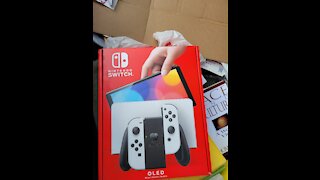 7:16
7:16
BigZVideoGames
2 years agoNintendo Switch OLED and Metroid Dread Unboxing
422 -
 3:04
3:04
srpatterson
2 years agoNintendo Switch Light Unboxing 2021
26 -
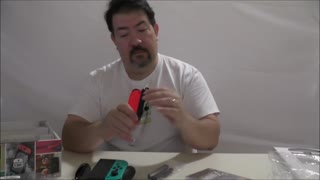 7:41
7:41
FamilyFriendlyGaming
2 years agoFFG Unboxing 25 Nintendo Switch
15 -
 2:31
2:31
BigZVideoGames
2 years ago $0.01 earnedYs IX: Monstrum Nox Nintendo Switch Unboxing
28 -
 6:56
6:56
MarisReviewChannel
3 years ago $0.95 earnedAnimal Crossing Nintendo Switch Special Edition Unboxing & Review
1872 -
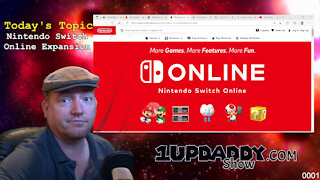 34:42
34:42
1UPdaddy
2 years agoNintendo Switch Online Expansion, a good deal?
15 -
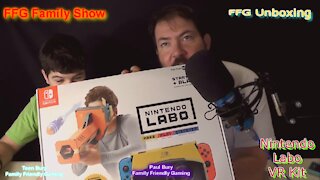 1:00:20
1:00:20
FamilyFriendlyGaming
2 years agoFFG Unboxing Nintendo Labo VR Kit
17 -
 12:48
12:48
FamilyFriendlyGaming
2 years agoFFG Reacts Nintendo Switch Lite
482 -
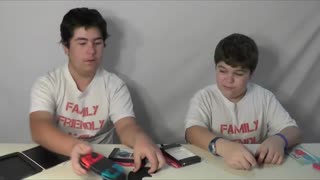 8:03
8:03
FamilyFriendlyGaming
2 years agoFFG Unboxing 57 Kontrolfreek Switch Gear
60